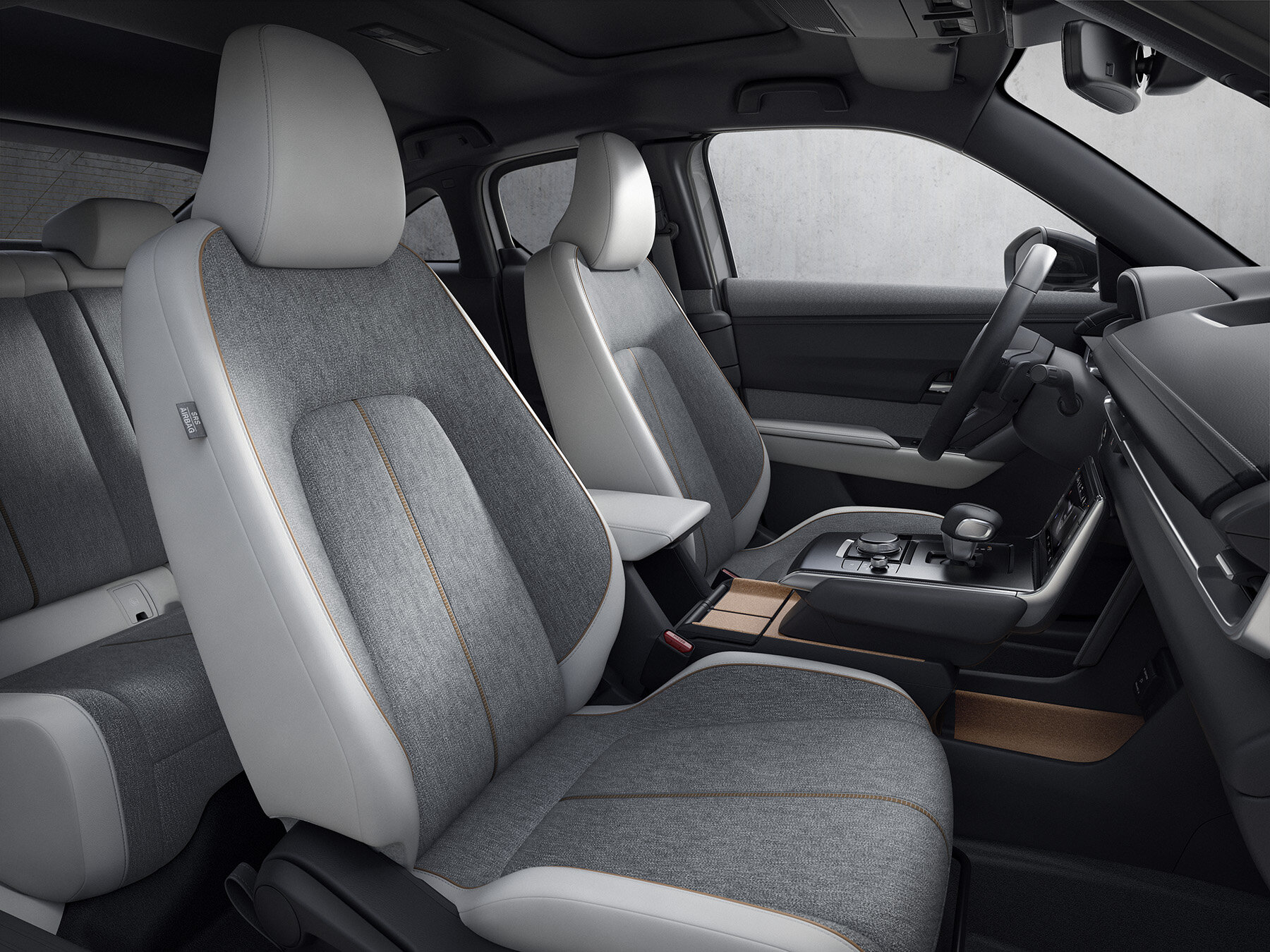Mazda MX-30 Announced for U.S. – Token Effort or Transformation?
By Edward A. Sanchez – April 14, 2021
Mazda North American Operations officially announced the availability of the company’s first production EV, the MX-30, for the North American market starting in fall 2021. Initial availability will be limited to California, with nationwide availability coming later. Along with the announcement of the BEV model, Mazda also said an MX-30 equipped with a Wankel (rotary) range extender would be coming, along with another PHEV model, and a conventional (non-plug-in) hybrid to follow.
Although many industry watchers throw out the term “compliance car” for any EV that doesn’t have at least a 60 kWh battery and 200+ mile range, considering Mazda’s historic skepticism and reluctance on EVs, it’s hard not to view the MX-30 through that lens. The BEV model (and presumably the range-extended model as well) have a 35.5 kWh battery, and an electric motor producing 144 hp and 200 lb-ft of torque. Although official EPA figures have not been released for the MX-30, it received a WLTP range rating of 124 miles. Considering the historic optimism of WLTP figures, it will be lucky to achieve much more than 100 miles on the EPA test. It seems the range-extender may be as much of a necessity as a luxury.
Although I, and many others, would consider 200 miles as essentially the minimum required range to be considered a legitimate “long-range” EV, there are other models on the market that have a rating below that that still serve their stated purpose well. The Mini Cooper SE has an EPA range rating of 110 miles, and a “useable” battery capacity of 28.9 kWh. The Cooper SE also has a similarly modest output of 181 hp and 199 lb-ft of torque. However, it is also substantially lighter, at 3,099 pounds versus the MX-30’s 3,660. I am expecting the MX-30’s performance to be adequate, not breathtaking.
Mazda has been one of the most stubborn holdouts to the electrification trend, claiming at various points that internal combustion engines could have a lower well-to-wheels environmental impact than battery electrics, and tenaciously pursuing clean diesel technology just before the revelation of the Volkswagen “Dieselgate” scandal in 2015.
Being one of the smaller global OEMs, Mazda’s hesitancy to dive head-first into electrification makes some sense from the standpoint of being prudent with its limited resources. Although the MX-30 is reportedly predominantly an in-house effort, the company has announced a partnership with Toyota on many other electrification initiatives. Mazda’s captive finance division is also now administered by Toyota Motor Credit. In 2018, the two companies also announced a joint factory in Alabama that would produce vehicles for both brands. On-paper, Toyota only holds a five-percent stake in Mazda, but their collaboration seems to be much more extensive.
Ironically, in the larger EV conversation, Toyota has also been one of the relative laggards in the development of long-range BEVs, continuing to insist its hybrid technology is a more rational approach to emissions reduction and whole-lifecycle environmental impact. But Toyota has much deeper pockets than Mazda and is also coming to terms with the fact that in about a decade, will essentially be forced to build BEVs for many markets.
From a purely objective, pragmatic, business standpoint, Mazda’s partnership with Toyota makes all the sense in the world. My concern with Mazda and Toyota’s relationship is much more subjective. Toyota is just now shedding its decades-long reputation of “reliable but boring.” Mazda has traditionally made its name with fun-to-drive, attainable performance, with a “driver-first” approach to vehicle development. I hope that its continuing partnership and deeper integration with Toyota does not result in a dilution of the brand’s core ethos and philosophy.
I have long thought that if Mazda were to truly commit to making a full-fledged long-range EV, it would be a delight to drive. The initial specs on the MX-30 say “appliance” more than “motorized toy.” Modest power does not always necessarily equal boring to drive, but unfortunately, the specifications on the MX-30 do seem to lean more in the direction of compliance car than wholehearted effort.
(Images courtesy Mazda)
- Podcast - Facebook - Google News - Twitter -










